What Hi-Fi? Verdict
The noise cancellation will grab you for all the right reasons, but the heavy-handedness with your music library may strike you for all the wrong ones
Pros
- +
Excellent noise-cancellation
- +
Bold presentation
- +
Strong design aesthetic
Cons
- -
Sound is heavy-handed
- -
Lacks musical cohesion and rhythmic drive
- -
Potential fit issues
Why you can trust What Hi-Fi?
French high-end audio specialist Devialet has always done things a little differently – which goes some way to explaining why the firm took a little while to release Gemini, its first-ever true wireless earbuds, initially announced in late 2020.
Devialet has filed over 200 patents in the 15 years since it was founded in 2007 – and true to form, the Parisian outfit’s debut in-ears are protected by a trio of them: Pressure Balance Architecture, Internal Delay Compensation, and Ear Active Matching. (We’ll come to these later.) As usual, a cursory glance at the product is enough to reveal that Devialet takes design cues from no one other than itself. With the Gemini's slide-top case and black-only colourway, if Thor’s adopted brother Loki wore headphones, these are the ones the God of Mischief would choose. But how good are they? And at this premium level, are they worth their significant asking fee? Strap in, for we are burdened with glorious purpose. No need to ‘Get Help’ here, Marvel fans, we’re well-equipped to find out for ourselves.
Price
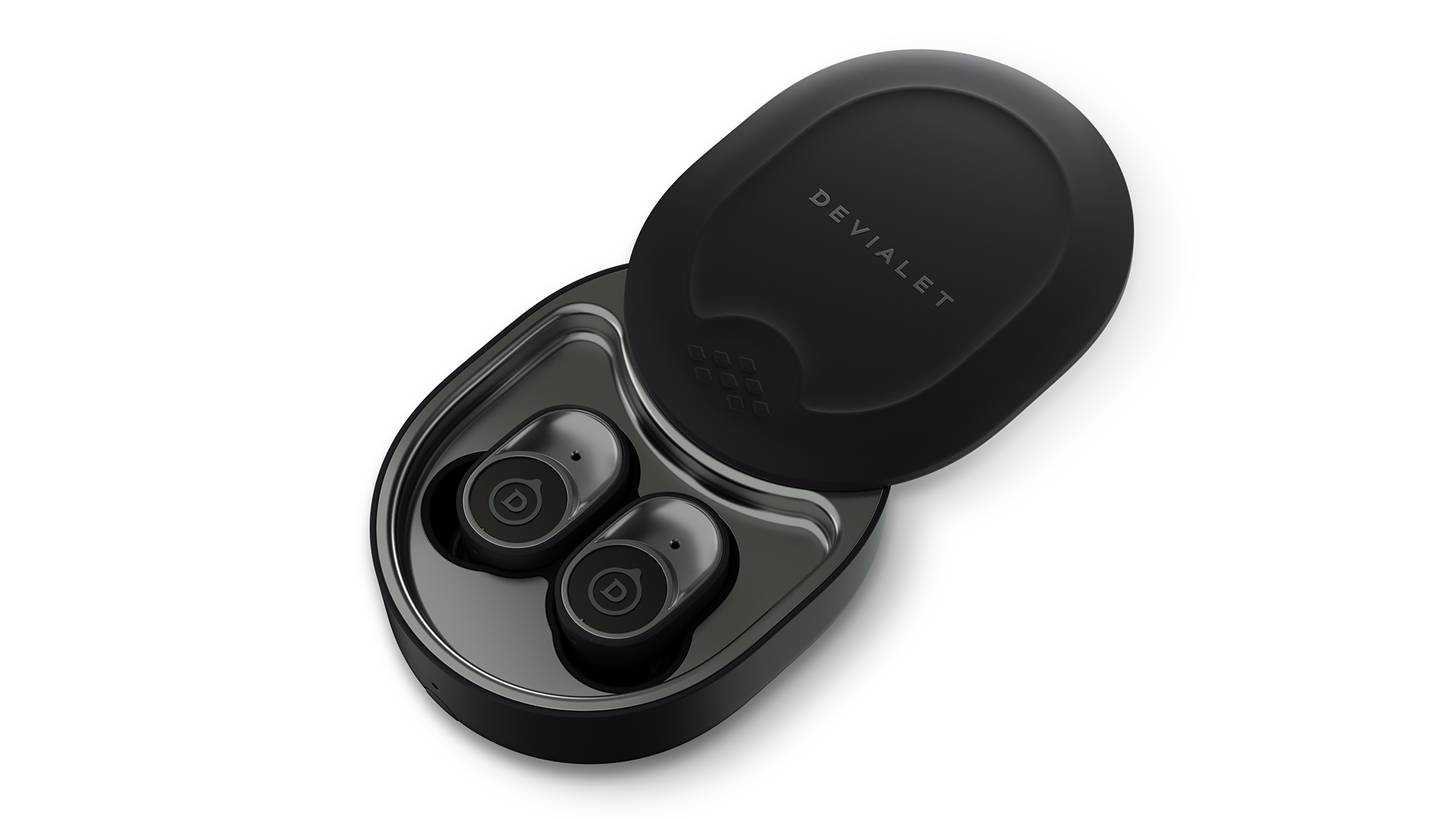
Devialet has always come in at the more premium end of the market and, at £279, its debut true wireless in-ear proposition is no exception. This price-point puts the Gemini earbuds into direct competition with Sony’s class-leading WF-1000XM4 (£250, $280, AU$450 at launch, although they can now be found for less) and means that plenty of excellent wireless headphones can be snapped up for cheaper – the Panasonic RZ-S500W, Sennheiser Momentum True Wireless 2, Shure Aonic Free and Bose QuietComfort Earbuds, for starters. Even Apple’s ever-popular AirPods Pro launched for (slightly) less, so Devialet’s pricing strategy is confident, to say the least.
Build and comfort
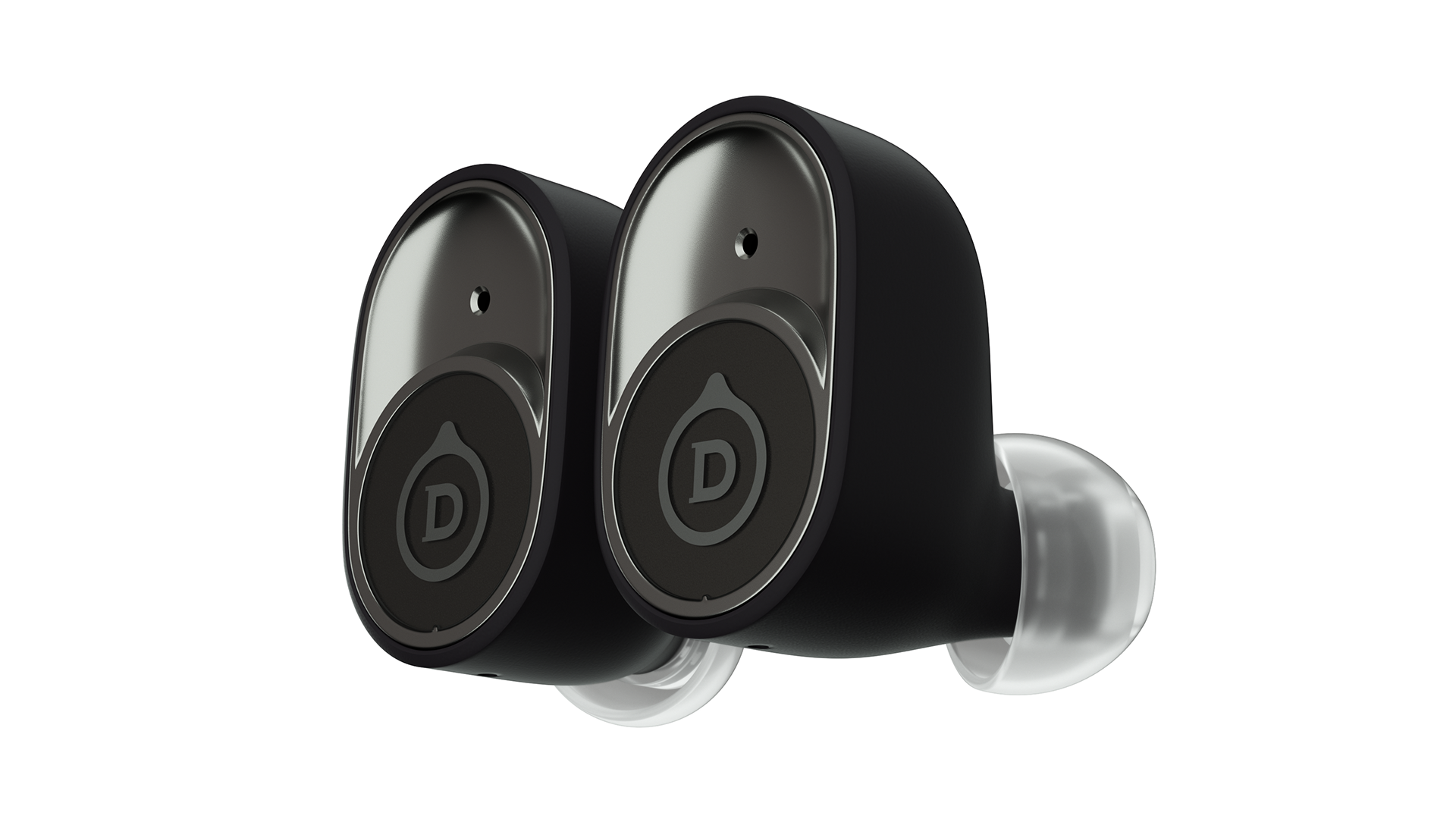
If Devialet’s design team were asked to make the Gemini look as different from Apple AirPods as humanly possible, they nailed the brief. True to form, Devialet has boldly gone its own way here.
The Gemini’s black plastic case is about the size of a travel bar of soap and is therefore slightly larger and less pocketable than other competing buds (such as Sony’s XM4), but it slides open quite dramatically to reveal the earpieces inside. Said buds are pill-shaped to resemble mini versions of the firm’s Phantom wireless speakers from directly above, with a flat circular surface above the neck of the earbud, bearing the Devialet logo and a depressed crescent shape finishing the design. This circular flourish is the fingertip touch-capacitive button and, unlike some designs, it works reliably and without issue when handling playback of our music – unless you are wearing gloves. Sadly, it is not possible to alter volume on the units themselves, meaning you either have to ask your voice assistant to do it or dig out your device to do it manually. And if you do decide to opt for a double-tap to summon your voice assistant, you’ll have to forego track skips forward and back – these are the only two customisable preferences in terms of on-device control within the dedicated Devialet app.
Although the case is nicely finished with a tactile detail to make sliding the lid open with your thumb feel intuitive, for this money we might reasonably expect a little more luxury. There’s a solo light on the front of the case, for example. It glows green for more than 50 per cent battery, orange when you have less than 50 per cent, red for low battery, and blinks white when pairing once you’ve pressed the button directly below it on first connecting them to your device. It’s a cost-effective solution, but these are hardly budget-conscious earbuds and a line of small LED lights (as seen on Cambridge Audio’s excellent Melomania 1 Plus, for example) to denote remaining battery life would offer a much clearer and more premium answer.
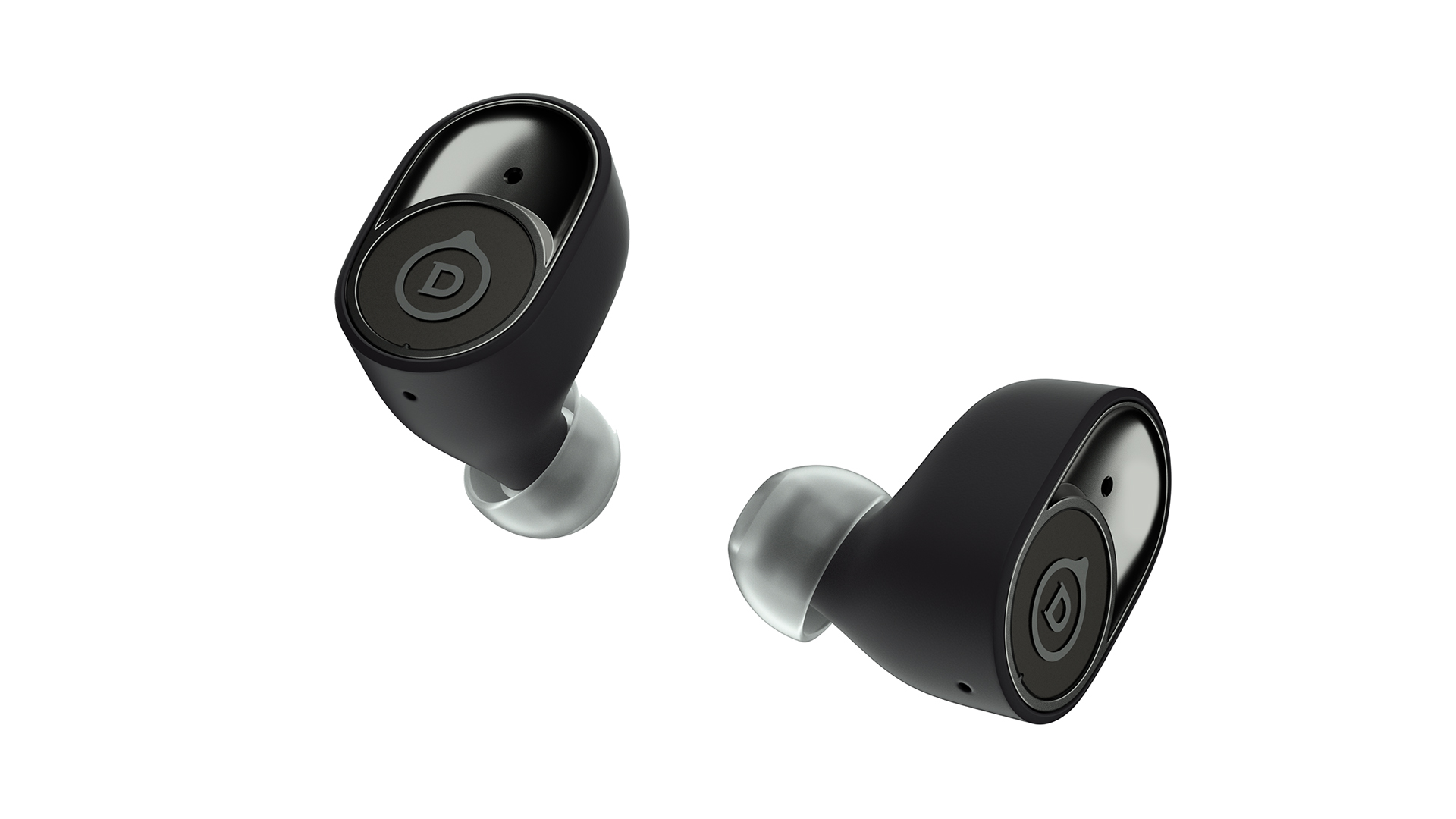
Finishes x1
Battery life 24 hours total. 8 hours (or 6 hours with ANC) buds + 3.5 full charges from the charging case
Splashproof rating IPX4
Bluetooth 5.0 with aptX
ANC Yes
Although a total of four oval eartip options are supplied (XS, S, L, and the prefitted M pair), they are quite thin and come only in translucent light grey silicon, which upsets the aesthetic somewhat. A few more premium memory foam options would certainly have felt more on-brand. Partly because of this and partly because the earpieces are quite deep, like rounded-off bricks rather than ergonomically shaped bulbs or teardrops, we find fitting them a challenge. The supporting Devialet Gemini app does have a tab entitled “Eartips: check if your earbuds are correctly placed”, but clicking through simply reveals a picture of the eartips supplied. We are told to select the best fit for our ears and are reassured that Devialet’s proprietary Ear Active Matching technology “will compensate any imperfect occlusions”.
This new EAM tech boasts enhanced signal transmission by adjusting audio signal frequency ranges in real-time. The claim is an end to loss in sound quality when you turn your head suddenly – if one earbud moves slightly, the in-built microphones can apparently detect the change in frequency and adapt, tailoring the signal to the ear up to 10,000 times per second.
While all of this sounds impressive on paper, early press releases promised a five-second ear scan and, right now at least, we have no evidence to suggest that this has been delivered. In a bid to test the EAM claims, one member of the team tried repeatedly but could not turn their head suddenly without dislodging one earpiece to the point that it actually fell out.
Under the casework, high-excursion 10mm Devialet drivers promise sensitivity and low distortion. Battery life is a claimed 24 hours of untethered playtime, with just upwards of 8 hours (or 6 hours with ANC activated) in every charge, and a further 3.5 full charges stored in the charging case. There's wireless Qi charging support, a USB-C charger, IPX4 water-resistance, Qualcomm aptX support. Refreshingly, Devialet claims that you'll also be able to buy a replacement charging case battery and spare parts for the left and right earbuds, should you ever need them.
Features
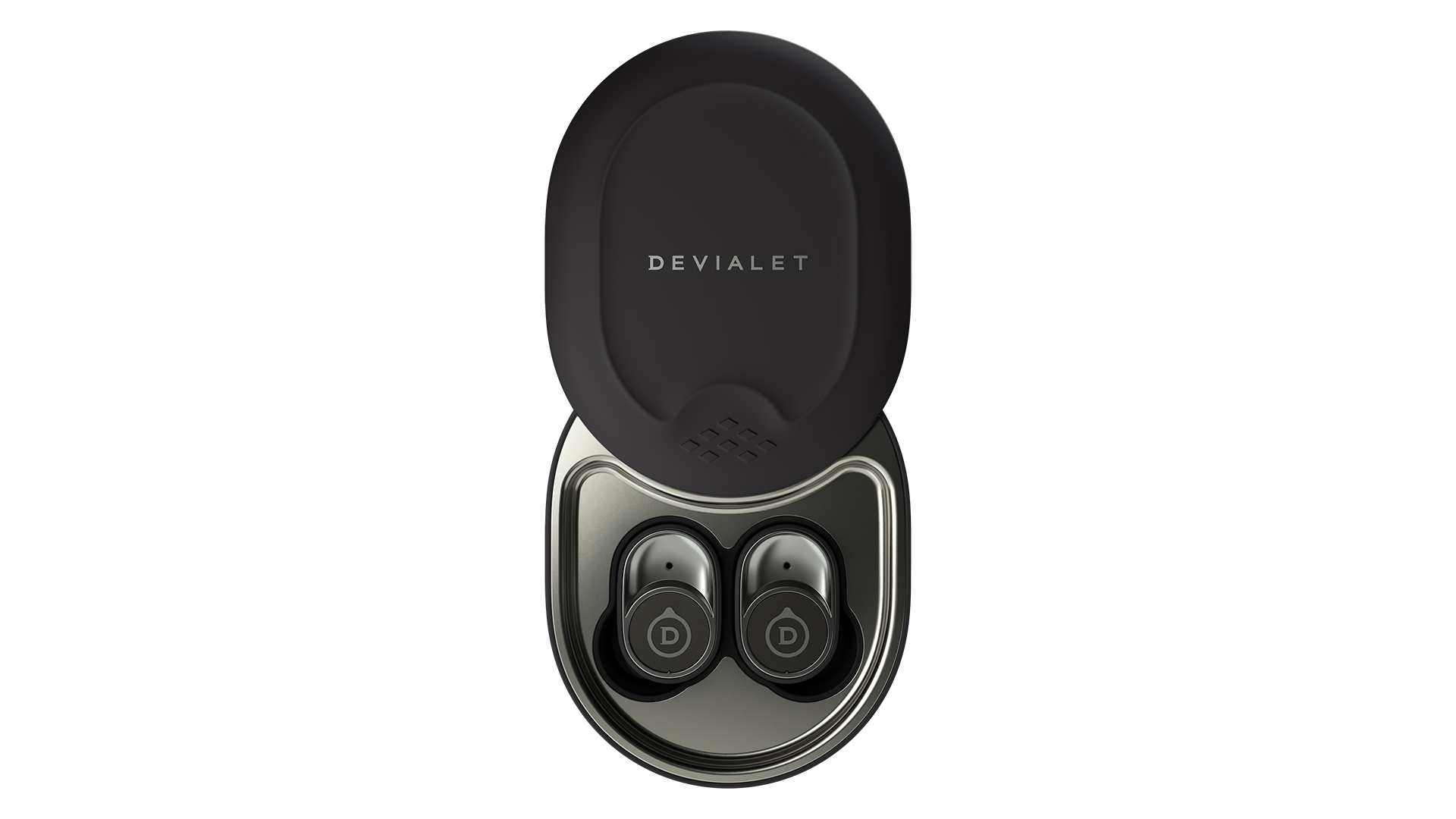
The Devialet Gemini app is a slick experience, although it isn’t as robustly featured as certain class-leading buds at this level (there’s no 'speak to chat', as found on the XM4, for example; no option to prioritise sound over a stable connection, and very little in the way of on-device control customisation). The home screen reveals a picture of your earbuds and their remaining battery, with tabs for noise cancellation, neutral and transparency beneath them. Click on ‘Cancellation’ and you’re given the option of ‘low’, ‘high’ and ‘plane’. Here, we must commend Devialet: the level of effective noise cancellation on offer is excellent.
The company’s proprietary new Pressure Balance Architecture involves "cascading decompression chambers inside the product" to ensure optimum inner pressure at all times, without impairing noise attenuation. Furthermore, each chamber is coated with a custom acoustic mesh to stop external noise from entering the system. This, coupled with Devialet’s new custom Internal Delay Compensation algorithm, which promises to compensate for the interior hold-up generated by a noise cancellation loop, promises significant gains in terms of noise cancellation. Whatever the firm has done to achieve it, it makes for a near noise-free experience on a busy street (with several buses and cars passing) when we deploy ‘plane’ – and without any nauseating vacuum or wind tunnel effects.
Similarly, when we select the transparency mode in either low or high, extraneous noise is filtered in, at different volumes, but never with the unwanted addition of brightness or harshness to our music – an issue some in-ears can fall foul of.
In the top right of the home screen is an equaliser tab, which is where you’ll also find options for auto-pause (to pause playback when an earbud is removed), a six-band equaliser tab with six presets or the option to create your own, and a balance slider if you’d like more volume from one bud than the other.
Two separate microphones in each earbud handle the excellent ANC, while one dedicated microphone per earpiece enhances voice transmission. During our tests, calls are clear too, rarely suffering from wind interference even on a blustery day.
Sound
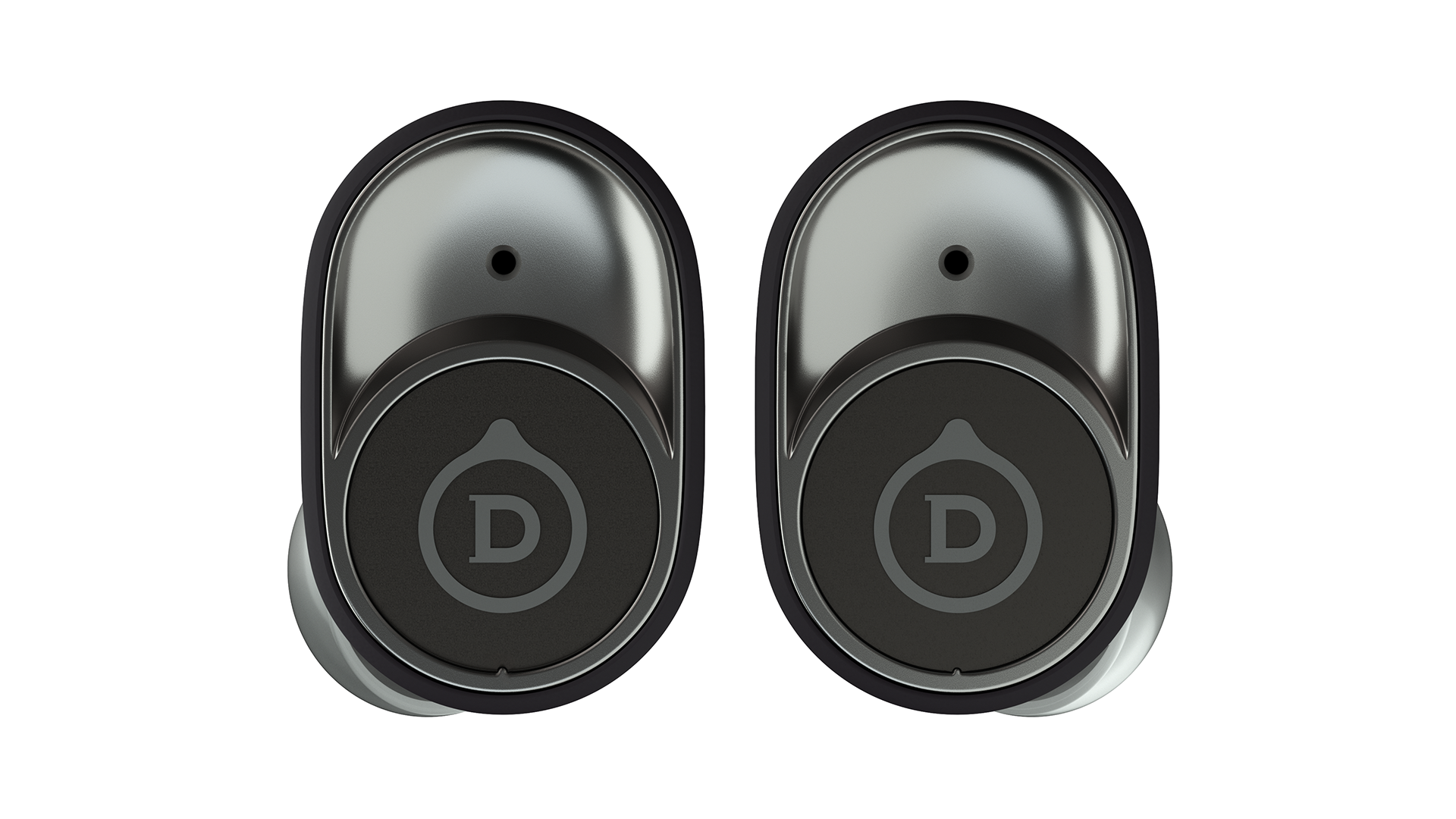
Setting all noise cancellation and EQ levels at neutral, we commence our listening with Sweet Dreams (Are Made of This) by Eurythmics on Tidal Masters and are instantly aware that Devialet’s first true wireless in-ears serve up an unashamedly punchy, exuberant sound with oodles of bass clout, energy, clarity and sass.
Sadly, over the course of our testing proper, this turns out to be the main problem. Here, Annie Lennox’s vocal should take centre stage, but the voracity of the synths and vocal trills mean this central strand is actually vying for our attention in a somewhat confusing mix that often sees our focus diverted elsewhere.
Yes, it’s energetic, but we aren’t tapping our feet in time to the rhythm because, in this cacophonous soundstage, timing across the frequencies suffers. Musical passages are not being held in check particularly well and songs lose momentum. Switch to the Sony WF-1000XM4 and you get a much better sense of space around notes, detail, placement of instruments and dynamic build throughout the track.
Listen to Africa by Toto and the initial laughter over in our left ear is stifled by the over-zealous drums and cowbell in our right. The treble too is a little forward, as if competing with other sonic articles that might detract from it. Switch to the Sony in-ears and it’s a different, altogether more cohesive and insightful story.
Stream Debussy’s Clair de Lune with the Devialet in-ears and the keys dancing across our ears feel as if they’re being played with a little too much force, rather than with the emotional human touch – the rise and fall – afforded by a little more refinement and space.
Verdict
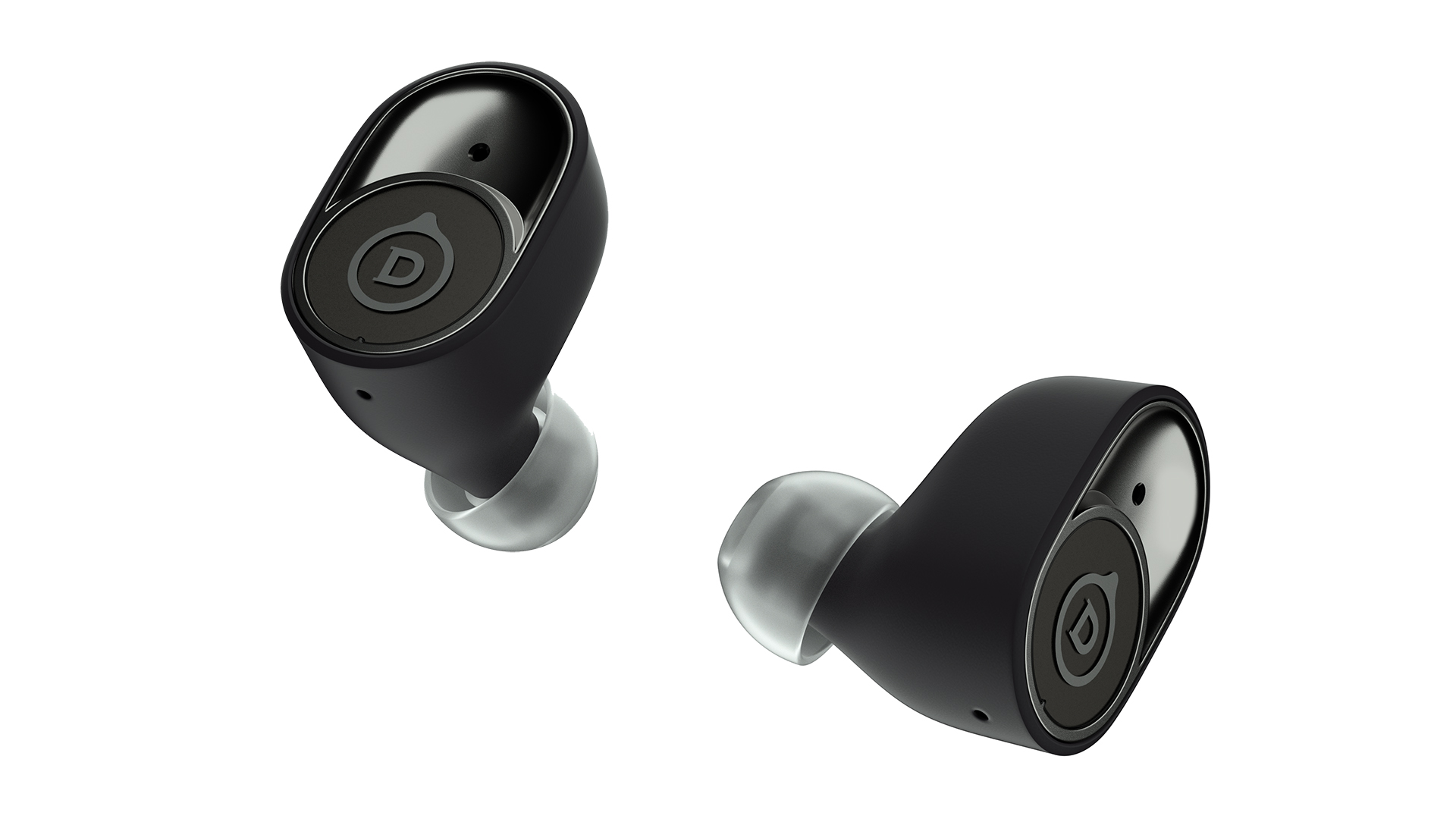
We caveat this verdict with the statement that if effective noise cancellation in a true wireless design is your chief concern, Devialet’s Gemini should be on your list. During testing, these earbuds perform more cohesively and with a greater sense of rise and fall when we select the two higher ANC profiles. However, this is not the default listening mode for many and it is when we turn active noise cancellation off in favour of neutrality, detail, expansiveness (and to save on battery) that things start to go awry.
Despite the omission of a few premium features (more varied on-device control options, speak-to-chat functionality and mic-mute, to name a few) compared to competing buds in this premium category, Devialet’s first shot at true wireless headphones bode well in terms of ambition, aptX support and the ability to cancel noise without issue.
But bolder isn’t always better, and sonically the recipe is a little too heavy-handed. The result is a ballsy but confusing mix, where musical strands can feel as if they’re fighting – both amongst themselves and for your attention.
SCORES
- Build 4
- Features 4
- Sound 3
MORE:
Read our review of the Sony WF-1000XM4
Also consider the Sennheiser Momentum True Wireless 2
Then there's always these Shure Aonic Free earbuds
Not forgetting Apple's Airpods Pro
These are the best in-ear headphones: budget to premium
What Hi-Fi?, founded in 1976, is the world's leading independent guide to buying and owning hi-fi and home entertainment products. Our comprehensive tests help you buy the very best for your money, with our advice sections giving you step-by-step information on how to get even more from your music and movies. Everything is tested by our dedicated team of in-house reviewers in our custom-built test rooms in London, Reading and Bath. Our coveted five-star rating and Awards are recognised all over the world as the ultimate seal of approval, so you can buy with absolute confidence.
-
redlabour No BT 5.2 and no AptX HD oder AptX Adaptive.....still searching the "Premium" in 2022. At this Pricerange there is no understanding why no QCC3056 was used. Seems they used a older mid tier Chipset.Reply

